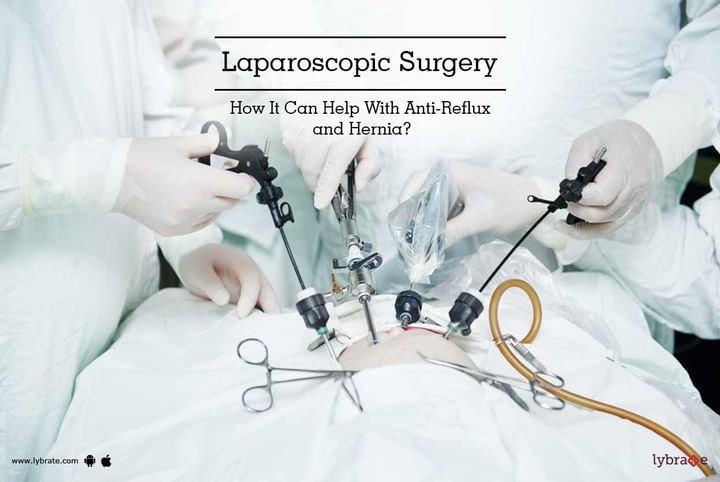Laparoscopic Surgery - How It Can Help With Anti-Reflux and Hernia?
Anti-reflux surgery (Fundoplication) is a procedure for treating gastroesophageal reflux disease (GERD) incorporated in hiatus hernia operation. GERD occurs when stomach contents reflux and enter the lower end of the esophagus (LES) due to a relaxed or weakened sphincter or a hiatus hernia. GERD is very much treatable and can cause serious complications if left untreated.
GERD symptoms
The main symptom of GERD is heartburn or indigestion, along with other symptoms, such as
- Acidic sour taste in the mouth
- Burning pain in the throat
- Difficulty in eating
- Bloating and belching
- Stomach pains
- Regurgitating food
- Nausea
- Vomiting blood
- Dark tarry stools
Laparoscopic Anti-Reflux Surgery
Laparoscopic surgery reinforces the lower oesophageal sphincter’s ability to prevent gastroesophageal reflux from occurring. The surgery involves wrapping the top part of the stomach around the lower end of the esophagus and suturing it in place. Since the esophagus passes through the hiatus, suturing is done to narrow the hiatus as it helps in the prevention and treatment of concurrent hiatal hernia.
Laparoscopic Surgery Procedure
A laparoscope, a long, narrow telescope with a light source and a video camera at the end, is inserted through a tiny incision into the abdomen. Images from the camera are projected onto a large high definition monitor for the surgeon to view enlarged images as it helps the surgeon perform surgery with precision.
- The patient is placed under general anesthesia
- The surgeon makes a small incision in the upper abdomen and inserts the laparoscope into the abdomen.
- The surgeon introduces carbon dioxide into the abdominal cavity near the belly button to expand the viewing area of the abdomen giving the surgeon a clear view and room to work.
- Additional small incisions are made for a variety of surgical instruments to be used during the procedure.
- After the identification of critical structure, the hole in the diaphragm, through which the esophagus passes, is then tightened with sutures.
- The surgeon wraps the upper part of the stomach around the lower esophagus guided by the images on the laparoscope, then creates a valve which is precisely sutured in its place.
- The laparoscope and other instruments are removed and the gas is released.
- The tiny incisions are closed and covered with waterproof dressings to avoid any kind of infections.
- The patient is usually discharged within 1-2 days of the surgery.
Post-surgery, hospitalization is required just for one day - no bed rest is required after that. The patient can quickly return to all normal activities and immediate relief from symptoms also happen.
In case you have a concern or query you can always consult an expert & get answers to your questions!



+1.svg)
